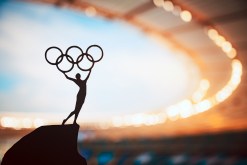Performance as Protest: How Can Artists Tackle World Issues?
Politicians voice their concerns about world issues on major news networks. Civilians take to social media or protest in groups to make their voices heard. Artists, on the other hand, blend performance and media to create pieces that offer interpretive critiques on global affairs.
At its core, performance art is an art form that combines visual art with some aspect of performance. Does it require a stage and a theater? Not necessarily. Ever since the 1950s, contemporary artists have explored ways to make their critiques on political affairs have a larger impact. As technology expands the opportunities for artists to incorporate media into their works, let’s look at the boom of performance art as a protest and see how it has expanded with today’s artists and activists.
A Generational Shift Inspires Change
The 1950s and 1960s were a time in America for challenging the status quo. Hotbeds of young, artistic communities explored the notions of what was considered normal in everyday life. At Columbia University, Beat Generation poets like Allen Ginsberg, Jack Kerouac and William S. Burroughs surrounded themselves with likeminded people to critique the world through their art.
Within a few years, places like North Beach in San Francisco and Greenwich Village in New York City were filled with people reading their poetry aloud to crowded cafes and critiquing interpretations on religion, sexuality and politics. Later, the hippie movement incorporated those ideals while creating music, art and lead marches that called for freedom and peace.
The Civil Rights Movement was another hotbed for the development of performative resistance and cultural critiques. Sit-ins and nonviolent marches were peaceful acts in defiance of racism and segregation. Artists contributed to those conversations activists were pushing into the mainstream. Norman Rockwell famously left the Saturday Evening Post to create more politically charged pieces like “The Problem We All Live With.” Meanwhile, musicians like Sam Cooke and Nina Simone made music that amplified the frustrated calls for racial equality. These protests and artistic movements made headlines across the world and helped a nation visualize the impacts of the country’s racial division.
The world has seen several political movements since, and art hasn’t been far behind. Much like the societal shifts of the ’50s and ’60s, artists help further larger conversations. But as technology has made it faster than ever to connect on a larger scale, how can artists contribute to global conversations?
Taking Your Art to the Global Stage with a Cause
It’s easier than ever to send messages around the world, so artists have to make big statements to address the here and now. It feels like it takes more intrigue and more controversy to get your point across, but perhaps that’s what is needed in today’s global climate.
Take Banksy, for instance. The graffiti artist turned his work into a performative guessing game, thanks to keeping his persona and his next canvasses a secret. His work turned up on unsuspecting walls in his native England critiquing societal norms, and he created an online cult following with each work. In 2005, he brought his work to a global stage at the West Bank, the 425-mile-long barrier separating Israel from Palestinian territories. He created nine stenciled escapist works along the wall in secret, depicting ocean waves, tropical beaches and sunny skies.
It heightened his work as an elusive cultural critic to a global scale and furthered the conversation about the ongoing conflict. Years later, he opened The Walled Off Hotel next to the wall, continuing his performative protest of the West Bank.
Taking Your Cause to the Global Stage with Art
Banksy was long known for his work as an artist, but what if you are activists looking to create similar waves? The Russian feminist punk band Pussy Riot staged guerilla performances to promote their causes throughout Moscow.
They fought for women’s rights, LGBT rights and for the ouster of Russian President Vladimir Putin. With each unauthorized performance of their politically charged music, the band’s name gained traction.
On February 21, 2012, the group performed one of their songs inside Moscow’s Cathedral of Christ the Savior before being arrested and charged with hooliganism. Two of the performers were held in prison for two years, but their performance and their mistreatment as prisoners gained global attention. Western countries criticized the Russian government over its treatment of the women, declaring the activists were prisoners of conscience.
Upon their release, they staged another guerilla performance next to the 2014 Sochi Winter Olympics, where they again made headlines for being stopped by violent police. In 2018, members stormed the field during the FIFA World Cup, continuing their call for equality and justice. They have since been awarded compensation from the Russian government as an apology for their previous actions.
The activist group now shares their message on tour, where they detail their ordeal as prisoners of the Russian government through mixed media performance. Pussy Riot started out with a cause and found a way to share their message through their art. Leading a global conversation gets harder with every new technical advancement, but artists are continuing to find ways to shake things up.






